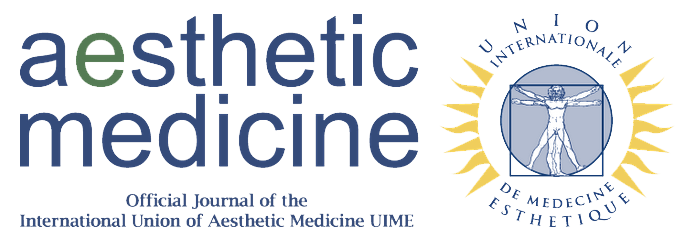Secondary effects resulting from hormone therapy on the quality of life and sexuality: analysis of the effectiveness of the use of specific dermatological products
Keywords:
Dermocosmetological treatments, Breast Cancer, urogenital symptoms, hormone therapyAbstract
Background. Breast Cancer (BC) treatments could determine urogenital symptoms which can impact negatively on sexual function and quality of life (QoL) and reduce compliance to therapy of the cancer woman.
Aim. The aim of the study is to investigate the impact of secondary effects on the urogenital system resulting from hormone therapy on the quality of life of cancer women; in particular, this study wants to evaluate if a specific dermatological treatment could reduce secondary effects of hormone therapy on the urogenital system and consequently improve women’s sexuality and quality of life (QoL).
Methods. Forty-nine women with BC were recruited. The women were divided into two groups and randomized in Experimental (EG) and Control Group (CG). For 42 days, EG use a specific dermatological treatment, while CG use a non-specific treatment. Participants were asked to performed 3 self-report instruments (Analogue scales for detecting the following symptoms, K10, WHOQoL-Brief) at three points: at baseline (T0), after 21 days (T1) and after 21 days (T2) from enrolment.
Results. The specific dermatological treatment in the EG was associated with statistically significant decreases in vaginal pain, vaginal burning, vaginal itching, vaginal dryness and with a statistically significant increase in QoL, after 42 days (T2).
Conclusions. The use of specific dermatological products decreases urogenital symptoms caused by hormone therapy and increase, consequently, the quality in sexual function and quality of life of women with breast cancer (QoL).
Downloads
Published
Issue
Section
License
Copyright (c) 2023 Lucia Bonassi

This work is licensed under a Creative Commons Attribution-NonCommercial 4.0 International License.
This is an Open Access article distributed under the terms of the Creative Commons Attribution License (https://creativecommons.org/licenses/by-nc/4.0) which permits unrestricted use, distribution, and reproduction in any medium, provided the original work is properly cited.
Transfer of Copyright and Permission to Reproduce Parts of Published Papers.
Authors retain the copyright for their published work. No formal permission will be required to reproduce parts (tables or illustrations) of published papers, provided the source is quoted appropriately and reproduction has no commercial intent. Reproductions with commercial intent will require written permission and payment of royalties.

This work is licensed under a Creative Commons Attribution-NonCommercial 4.0 International License.





